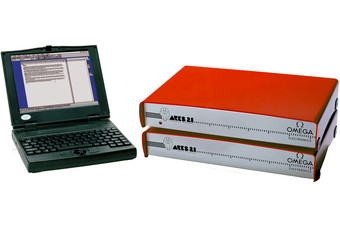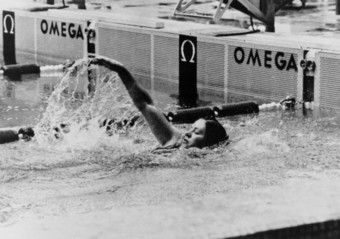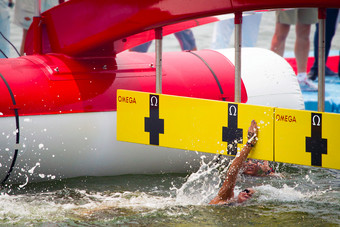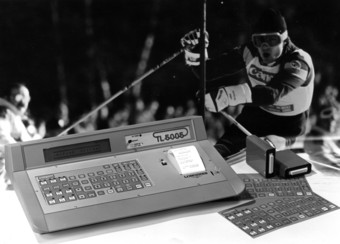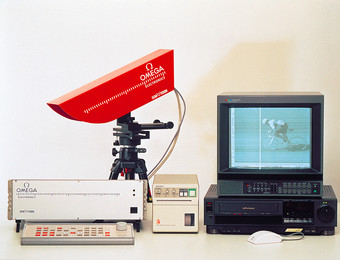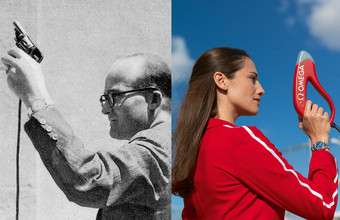Innovation Milestones
Innovation Milestones
2018 : At PyeongChang 2018, OMEGA is pav¬ing the way for a dynamic Olympic Games future. Through incredible sensor systems, the brand provide continuous mea¬surements from start to finish of events, meaning that athletes can gain an imme¬diate understanding of where they gained or lost time, or where they won or lost points. Alpine Skiing: acceleration and brake, live speed, jump analysis. Cross Country: live position of the athletes. Snowboard Cross and Ski Cross: jump analysis. Speed Skating and bobsleigh: live speed. Ice Hockey: athletes and puck movements tracking.
2017: At the FIS Alpine World Ski Championships in St.Moritz (SUI), introduction of the game-changing Longines Live Alpine Data system, consisting of a chip attached to the skier’s boot that is equipped with a radar and motion sensor. This system enables the real-time and continuous measurement of an athlete’s speed, acceleration and deceleration, the time it takes to reach 100km/h and an analysis of jumps. This data is presented in the form of TV graphics to viewers at home and to the spectators attending the competitions.
2016: Rio 2016 Olympic Games ground-breaking innovations included athletic photocells composed of four cells instead of two. The Athletic False Start Detection System was enhanced with built-in sensors that measure force against the footrest, 4,000 times per second. Scan’O’Vision MYRIA, which can take up to 10,000 images per second. Public and sport specific scoreboards able to display animation, pictures, and visual imagery. Golf scoreboards able to display the height, speed, and estimated distances of every stroke. Archery target system: when the arrow hits the target, two scanners calculate its position within 0.2mm accuracy, a task impossible for the human eye.
The NBA and Tissot have partnered on an integrated timing system and a shot clock with LED glass technology developed exclusively for the league. The clock appears to be cable-free and is equipped with LED glass, making it almost completely transparent. It integrates the 24-second, timeout, and game clocks in one unit. Transitions between numbers are undetectable, even with high-speed TV cameras. The system simultaneously transmits exact timing data to all in-arena scoreboards and video equipment.
2014: At the Sotchi 2014 Olympic Games, the following novelties were introduced: the Quantum Timer in Alpine Skiing - Some virtual 2D measurements, making it possible to see the high or length of jumps in Ski Jump, Half Pipe, and Freestyle Skiing - A GPS localization system, and speed measurement in Cross Country.
2013: The Atomic Quantum Timer was the first device driven by an integrated atomic clock, improving accuracy by a factor of 100 (<0.03 sec/year!). New Swiss Timing technology detected a referee’s whistle in ice hockey – even at the noisiest of games. When the whistle is blown, the clock stops immediately. Toward the end of a period, a second can make all the difference and at the Sochi 2014 Olympic Winter Games, the whistle detection technology already proved its worth.
2011: New starting blocks for athletics events included force sensors that continually measure an athlete’s thrust force, improving false start detection.
2010: At the Vancouver 2010 Olympic Games, a new start pistol was introduced – a streamlined, futuristic device flash gun connected to a sound generation box replaced the traditional revolver. The Games also saw the debut of a high-definition judges’ scoring system for figure skating, the ultra-precise Chronos Timer, and the Snowgate Starting Gate used in alpine skiing. The Quantum Timer was introduced. Representing a completely new generation of timekeeping devices, it is connected directly to computers and offers a resolution to a millionth of a second! In summer sports, a new touchscreen keyboard for gymnastics judges offered easier, more consistent scoring.
2008: In taekwondo, Swiss Timing introduced automatic point calculation in real time. In distance running events, athletes had integrated bib transponders, a development that made it easy to keep track of their positions throughout the race. A new swimming start block was introduced, which introduced a footrest departure assistance feature. The Commentator Information System (CIS) was now available worldwide through the Internet on standard computers. The Scan’O’Vision continued to evolve. The new edition, Star, recorded 2,000 frames per second. GPS was used for the first time in rowing, canoeing, and kayaking as well as in sailing and road cycling events.
2007: High-speed video (HSV) recorded the action in the pools at 100 frames per second. This technology would be put to the test at the Beijing 2008 Olympic Games when it confirmed Michael Phelps’ hundredth of a second victory margin over Milorad Cavic in the 100m butterfly.
2005-2006: In gymnastics, the Instant Replay and Communications System (IRCOS) and the Video Assist Judging System were presented at the World Championships in Melbourne. A system adapted for fencing would be introduced in 2006. The Commentator Information System (CIS) was available on a standard computer network.
2004: The new Chronos timer brought an unparalleled level of accuracy to sports timekeeping. Virtual graphics in swimming (the virtual record line) and ski jumping (distance) were immediate hits with fans and viewers.
2000: Live Timing distributed the results and photofinish images in swimming events via the Internet. Fans could see the results in real time at omegatiming.com.
The real-time display of the punches thrown in boxing was introduced. The Saturn Console for team sports was debuted.
1999: Transponders were introduced to keep track of the positions of cross-country skiers.
1997: In CART (formerly Indy Car) races, it was possible to hear the drivers’ voices.
1996: Wind measurement technology was integrated into the scoring of ski jumping. In sailing, the competitors were, for the first time, tracked with GPS technology.
The very first super VHS colour video cameras with CCD sensors were used in the timing of swimming events.
1995: The Scan’O’Vision images were, for the first time, in colour. ARES – the Automatic Recording Evaluation System or Advanced Results Entry Station – fused chronometry and information technology. The digital era of sports timekeeping had arrived. Swiss Timing launched the Micro Smart Terminal (MST), a timing and multi-sport display. In track cycling, the first fully automatic starting system was used in pursuit events as well as the 500-metre, one-kilometre, and team sprints.
1993: The Hawk Eye photofinish camera introduced high-resolution scanning technology embedded in a computer.
1991: Active transponders capable of timing 128 cars at the same time supported motor sport.
1990: The Scan’O’Vision photofinish camera was introduced. Video cameras were used to measure the distance of ski jumps.
1976: The public was treated to the OMEGA video matrix scoreboard at the Montreal 1976 Olympic Games. In the same year, Swiss Timing was on hand – under that name – as Official Timekeeper of the Olympic Winter Games.
1968: In Mexico in 1968, the now-familiar touch pads placed at both ends of the swimming pool caused a sensation. For the first time competitors stopped their own clocks, eliminating the need for judges with stopwatches. The Swim-O-Matic timer was also introduced.
1950: Longines was invited to time the first Alpine Skiing World Championships in Aspen, Colorado in 1950. The brand installed a new generation of electro-magnetic gates that recorded each competitor’s starting and finishing times.
1948-1949: At the London 1948 Olympic Games, OMEGA introduced its photoelectric cells, which stopped the clock at the exact moment a runner crossed the finishing line, and a year later the Racend OMEGA Timer - integrating photoelectric technology and a slit photofinish camera - changed timekeeping for good.


